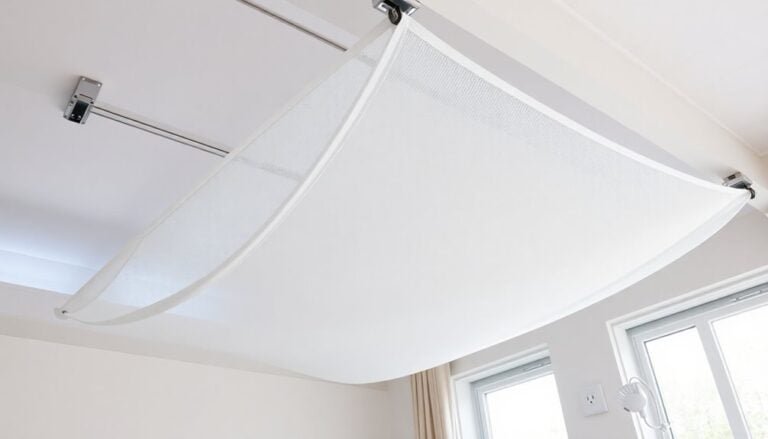EMF Protection for Hearing Aids and Implants
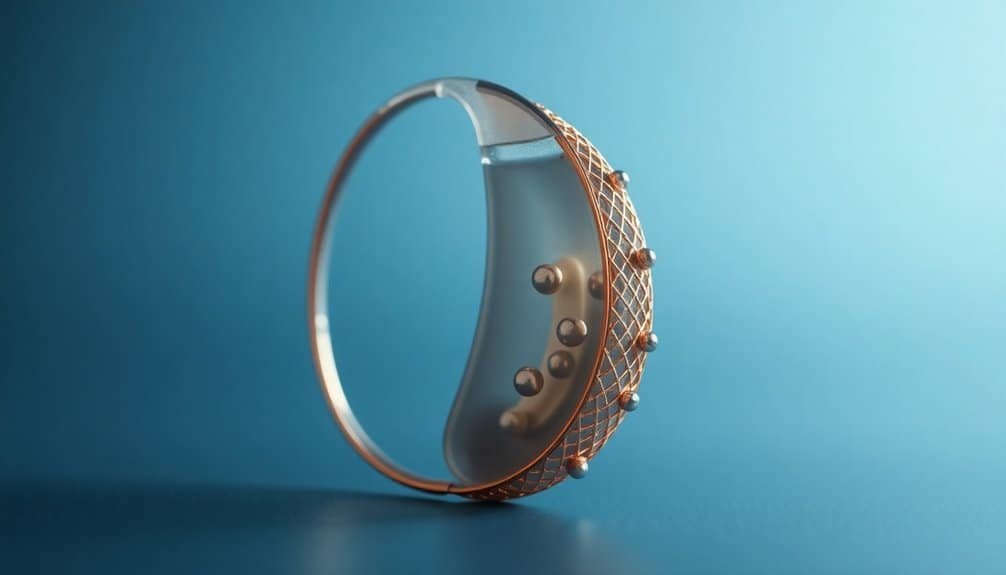
Protecting hearing aids and implants from electromagnetic fields (EMF) is vital to maintain device performance. Use shielding materials like copper or aluminum, avoid placing wireless devices nearby, and monitor proximity to strong EMF sources.
Utilizing EMF protection cases designed for hearing devices can enhance safety, ensuring optimal implant function. Further exploration of health risks associated with EMF exposure is necessary.
Disclaimer: As an affiliate, I may collect a share of sales from the links on this page.
Understanding EMF and Its Sources
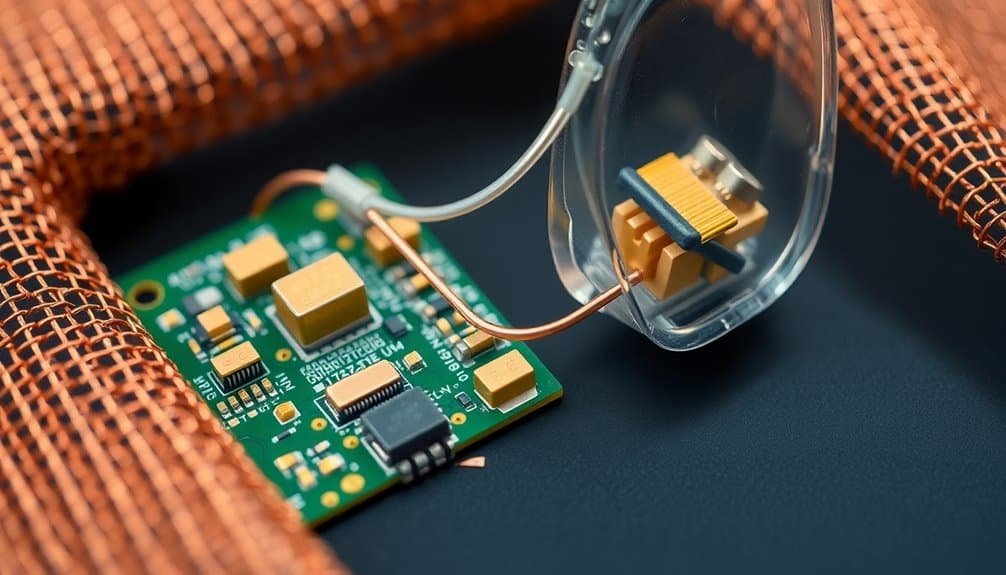
As you explore the domain of electromagnetic fields (EMF), it’s essential to grasp their definition and origins. EMF entails the interaction of electric and magnetic fields in space and time. These fields arise from both natural sources, like the Earth’s magnetic field and solar radiation, and artificial sources, including power lines and wireless devices. Moving charges generate combined fields, while stationary charges produce only electric fields. The electromagnetic field combines electric and magnetic fields, leading to various phenomena that can affect electronic devices. Additionally, radiation types depend on wavelength, influencing how these fields interact with technology. Frequencies range from static to gamma rays, with most everyday exposure being non-ionizing. Understanding these fundamentals helps you appreciate how EMF affects devices like hearing aids and the importance of protective measures.
Types of Hearing Implants
Types of hearing implants cater to various needs, each designed to address specific types of hearing loss.
Cochlear implants improve speech understanding for those with severe sensorineural loss, directly stimulating the auditory nerve. Cochlear implants can be especially beneficial for individuals who do not gain sufficient improvement from hearing aids.
Bone conduction implants transmit sound through the skull, ideal for conductive or mixed loss.
Middle ear implants enhance natural bone movement, offering a more organic sound.
Auditory brainstem implants cater to individuals with serious auditory nerve damage, stimulating the brainstem directly.
Finally, Vibrant Soundbridge implants amplify sound via the Floating Mass Transducer, improving clarity for conductive and mixed hearing loss.
Each type serves distinct auditory challenges effectively.
Effects of EMF on Hearing Devices
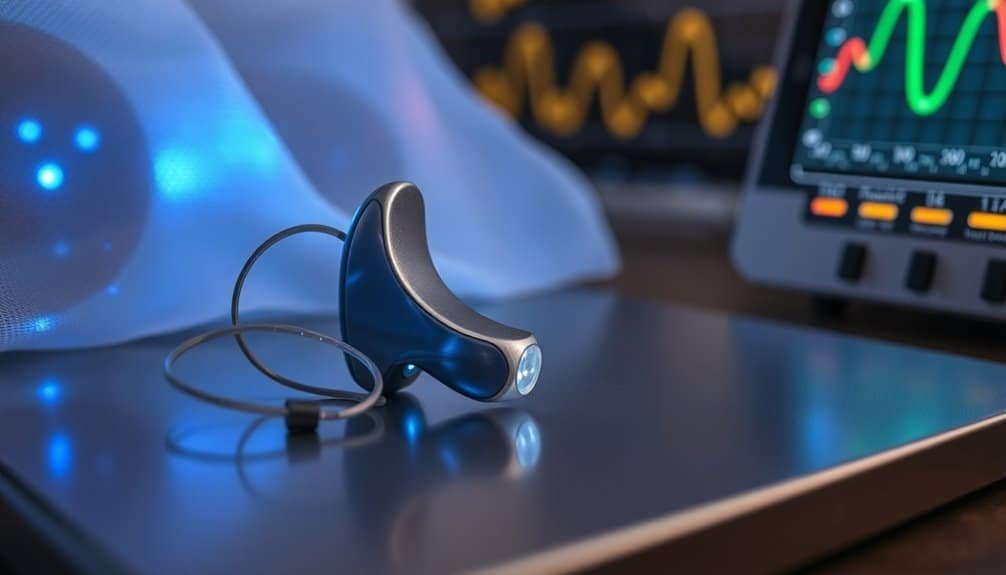
Electromagnetic fields (EMFs) can negatively impact hearing devices, particularly due to their sensitivity to electromagnetic interference (EMI).
Users should be aware of the following effects:
- Neuronal Degeneration: Chronic EMF exposure may contribute to degeneration within the auditory system. Additionally, wireless hearing aids are designed with regulations ensuring safety, but users should remain cautious of prolonged exposure in high EMF environments.
- Distorted Sound Quality: EMI often leads to clarity issues, causing hearing aids to produce distorted sound.
- MRI Concerns: For cochlear implants, RF electromagnetic fields can induce heating, risking tissue damage during procedures.
Understanding these potential challenges helps you navigate the use of hearing devices in environments with high EMF exposure, safeguarding your auditory health.
EMF Protection Measures for Users
Understanding the potential impact of electromagnetic fields (EMFs) on hearing devices leads to the necessity of implementing effective protection measures.
You can use shielding materials like copper or aluminum foil to create a barrier around your hearing aids, considerably reducing EMF exposure. Consider employing protective cases specifically designed for shielding.
Limit your wireless device usage near your hearing aids, and maintain distance from strong EMF sources, like cell towers.
Modify your environment by opting for wired connections and stay informed about common EMF sources. Utilizing EMF monitoring tools can also help you keep track of exposure levels effectively. Additionally, grounding techniques can further enhance your safety by stabilizing your body’s internal bio-electrical environment.
Health Risks Associated With EMF Exposure
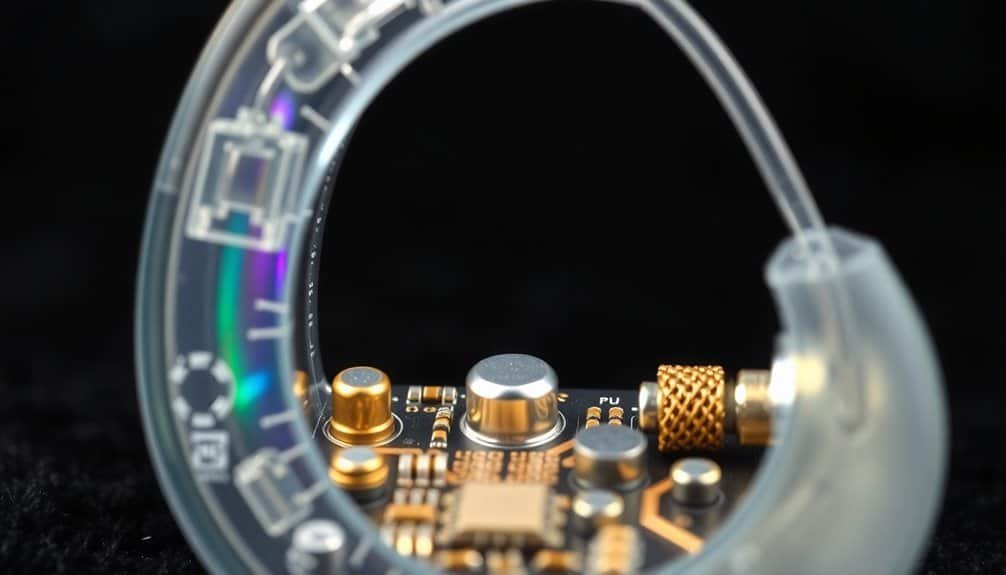
While research on health risks from electromagnetic fields (EMFs) remains ongoing, some studies suggest potential links to various health issues. Key concerns include:
- The International Agency for Research on Cancer (IARC) classifies ELF-EMFs as “possibly carcinogenic,” particularly relating to childhood leukemia.
- Epidemiologic studies show an increased risk of childhood leukemia with exposures above 0.3 to 0.4 μT, although mechanisms remain unclear.
- Reported symptoms, including headaches and fatigue, lack strong scientific support, leading to ongoing investigations into potential physiological effects. Additionally, concerns regarding 5G technology and its safety continue to be a topic of discussion as further research is warranted.
Understanding these factors helps you assess the implications of EMF exposure on health as research continues.
Technological Advancements in Hearing Implants
Recent innovations are reshaping the landscape of hearing implants, enhancing both functionality and user experience. Improved sound processing technology delivers clear, distortion-free audio, while extended battery life reduces the frequency of recharging.
Enhanced wireless connectivity enables seamless integration with smartphones and TVs, increasing accessibility. AI and machine learning allow devices to adapt to various sound environments, boosting user satisfaction.
Compact, advanced implant designs minimize complications and recovery times. Personalized solutions offer customized sound settings, and user-friendly interfaces simplify management.
These advancements promise greater comfort, efficiency, and overall quality of life for hearing implant users, reflecting notable progress in the field.
Regulatory Standards and Guidelines
Regulatory standards and guidelines play a critical role in guaranteeing the safety and effectiveness of hearing aids. Key regulations include:
- FDA Regulation: Hearing aids are classified as medical devices, guaranteeing safety and performance.
- EMI Standards: IEC guidelines offer protocols for testing and minimizing electromagnetic interference.
- ISO Compliance: ISO standards, like ISO 14708, govern cochlear implants and active devices.
These frameworks guarantee manufacturers meet strict criteria, promoting consumer safety.
Compliance requires testing and certification. Understanding these standards helps you make informed choices when selecting hearing aids, guaranteeing they align with safety and performance benchmarks established by regulatory authorities.
Best Practices for Safe Usage Around EMF Sources
When using hearing aids and implants around electromagnetic field (EMF) sources, it’s crucial to follow best practices to guarantee user safety and device longevity.
Position your devices away from direct EMF sources, as proximity can increase exposure, especially for devices like BAHA and Bonebridge implants.
Create EMF-free zones by limiting the use of Wi-Fi routers and mobile phones nearby.
Utilize shielding materials and consider devices designed with built-in EMF protection.
Regular maintenance guarantees ideal function and might reduce EMF-related issues.
Finally, stay educated on manufacturers’ guidelines and the latest research to navigate EMF safety effectively.
Frequently Asked Questions
Can I Use Bluetooth Devices Safely With My Hearing Implants?
Yes, you can use Bluetooth devices safely. Their low power output minimizes electromagnetic radiation exposure. Just follow the manufacturer’s guidelines, and you’ll enjoy enhanced connectivity without health concerns impacting your hearing.
What Should I Do if My Hearing Device Malfunctions Near EMF Sources?
If your device’s displaying distress near EMF sources, distance yourself, determine the disturbance, and document noises. Don’t hesitate to discuss details with your provider; they’ll help troubleshoot and tackle the troublesome signals effectively.
Are There Any Specific Brands That Offer Better EMF Protection?
Yes, several brands provide excellent EMF protection. DefenderShield is renowned for its high-quality shielding technology, while Conscious Spaces and TechWellness also offer effective products. You should explore these options to find what best suits your needs.
How Often Should I Check My Hearing Device for EMF Interference?
You wouldn’t want to miss a single beat, so check your hearing device regularly—at least every few months. More frequent checks are wise in high EMF environments, ensuring your device performs at its absolute best.
Can Environmental Factors Affect EMF Exposure Levels Near My Hearing Aids?
Yes, environmental factors like temperature, humidity, and EMI sources can affect EMF exposure levels. You should regularly assess your surroundings, maintaining distance from potential interference and being mindful of conditions that may impact your devices.
Conclusion
Understanding EMF’s effects on hearing aids and implants is crucial for health and device performance. Implementing protective measures and best practices can create a safer environment for these devices.
Shielding your hearing devices ensures reliability in a tech-driven world. Staying informed about advancements and regulatory standards helps navigate potential risks.
Safeguarding your hearing solutions empowers you to maintain clear communication. This enhances your overall auditory experience.




